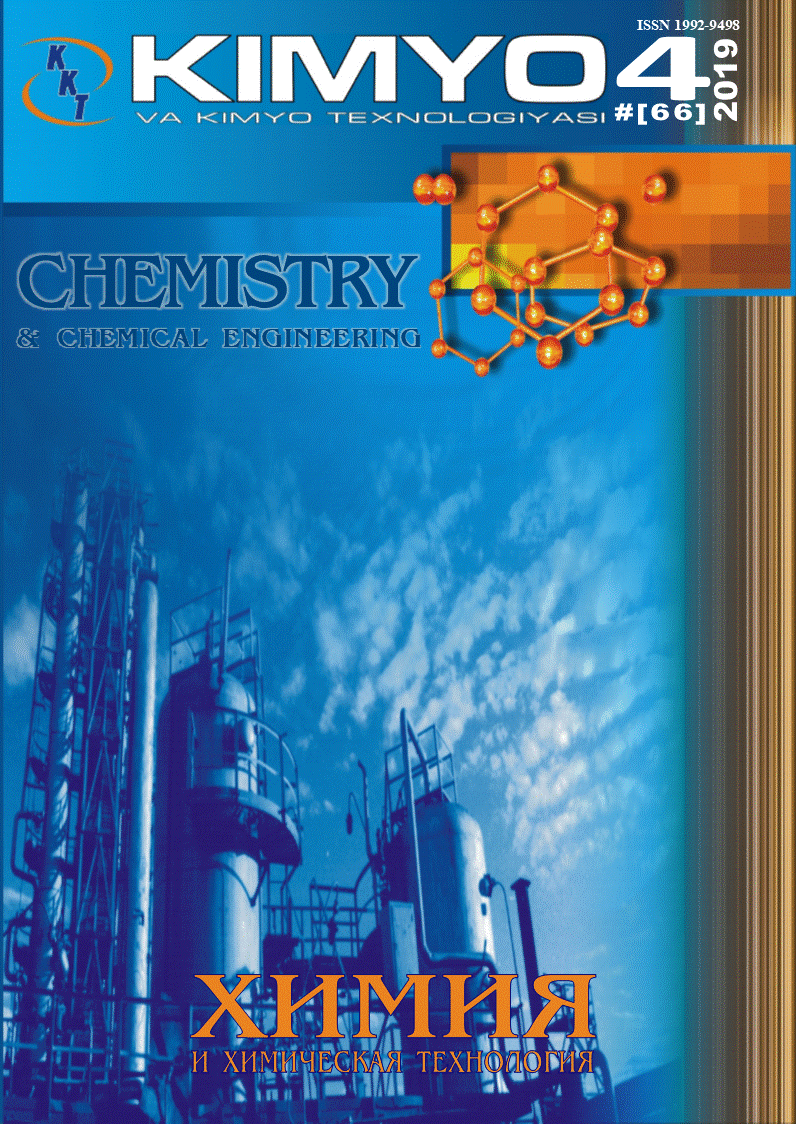
Abstract
The article presents the results of studies to identify the nature of aldehydes on the direction of their reaction with monoethanolamine. IR, PMR and NMR13C spectral analyzes have shown that a heterocyclic compound consisting of methylene groups and tertiary nitrogen is formed as a result of the reaction of equimolar amounts of MEA and PD. In addition, each tertiary nitrogen atom contains a side pendant - hydroxyethyl groups. The presence of hydroxyl groups allows this compound to be attributed to symmetrical hexahydrotriazine containing three OH groups. The formation of symmetric hexahydrotriazine is due to the trimerization of methylideneaminoethanol, which in turn is formed by the reaction of MEA with PD. The validity of this structure is confirmed by the determination of the elemental composition of the synthesized compound. It was established that the yield of the final product depends on the structure of aldehydes, i.e. on the nature and extent of substituents at the carbonyl group. Bulk substituents probably reduce of side reactions of polymerization and cyclic formation. The individuality of the synthesized compounds was established by IR, NMR spectra, as well as by comparing the theoretically calculated and experimentally determined elemental compositions of the products. The reaction of benzaldehyde with monoethanolamine, studied in the conditions, stops at the stage of formation of azomethines. It was shown that, under the conditions studied, depending on the nature and volume of the substituents, the carbonyl group of aldehydes forms N, N’, N” -tris- (β-hydroxyethyl) -hexahydro-S-triazine and benzylidene-aminoethanol.
Recommended Citation
Akhmadali, Khudoyberdidiev; Guzal, Khodjayorova; Ravshan, Adilov; and Muzaffar, Alimukhamedov
(2019)
"Influence of the structure of aldehydes on the directions of their reactions with monoethanolamine,"
CHEMISTRY AND CHEMICAL ENGINEERING: Vol. 2019:
No.
2, Article 5.
DOI: https://doi.org/10.70189/1992-9498.1110
Available at:
https://cce.researchcommons.org/journal/vol2019/iss2/5
